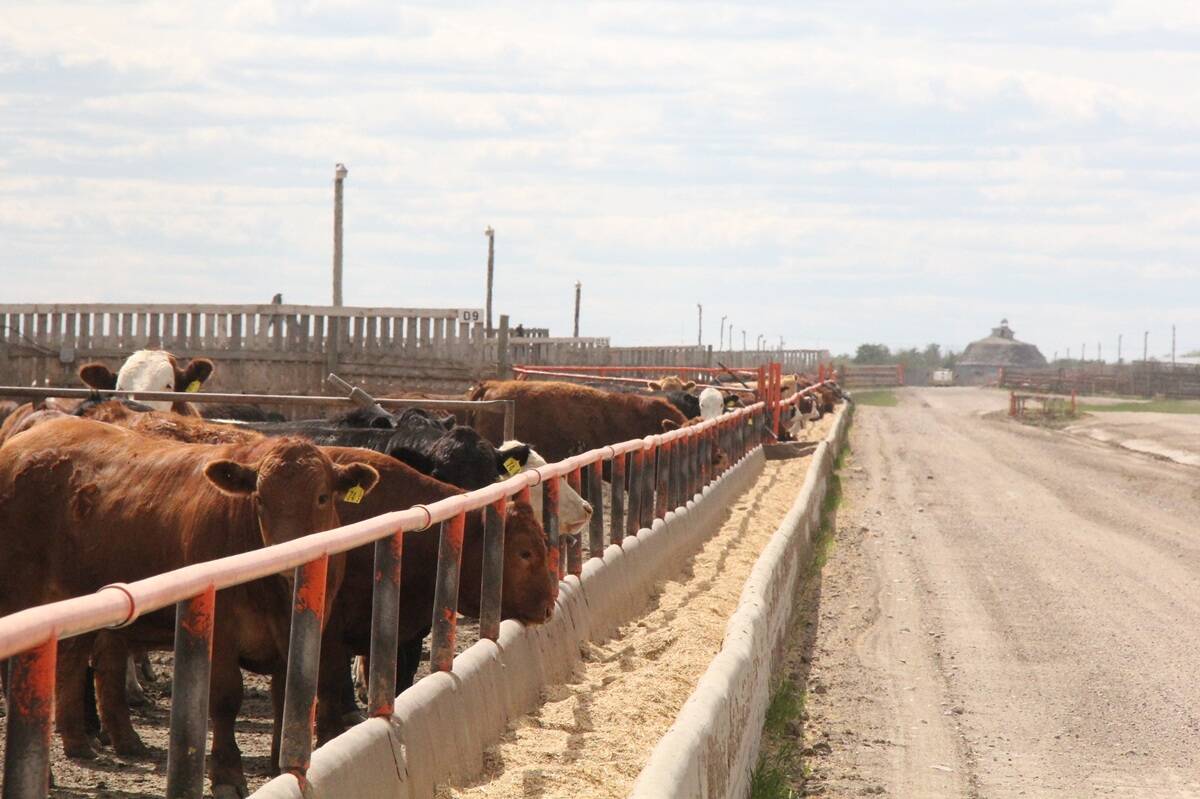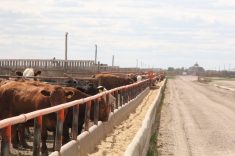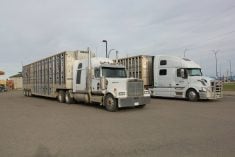In 2017, the Canadian Food Inspection Agency released draft transport regulations requiring that all cattle receive a minimum eight-hour feed, water and rest break after a maximum of 36 hours in transit. Because there was no relevant science to support this decision, Agriculture and Agri-Food Canada (AAFC) and the BCRC funded a Beef Cluster project to determine whether feed, water and rest stops during long-distance transport improve calf health and welfare outcomes.
This project was led by led by Dr. Karen Schwartzkopf-Genswein and Dr. Daniela Melendez of AAFC Lethbridge. Their third and final study (Effect of rest, post-rest transport duration and conditioning on performance, behavioral and physiological welfare indicators of beef calves) should be published in PLOS One in the coming months.
[READ MORE] Auction marts, cattle groups apprehensive about Transfer of Care requirements
Read Also

Unwinding the fibre in feedlot cattle diets
Research into how barley rolling method and undigestible NDF levels affect animal performance and digestive health in finishing diets
What they did: In the fall of 2020, 328 commercial steer calves (523 lbs.) were split into two equal groups. One group was preconditioned (weaned, vaccinated, given antibiotic and parasite treatments and adapted to a backgrounding diet three weeks before the transportation study started). The other half were not weaned until the study started. Both groups of calves were then transported for 20 hours. After this, half (82) of the preconditioned and half (82) of non-preconditioned calves were unloaded and rested for eight hours before being reloaded and travelling another four or 15 hours. The remaining calves were unloaded, sampled, immediately reloaded and travelled the final four or 15 hours of their journey without a rest. These trips approximate the travel times from Lethbridge to Thunder Bay (20 hours) where cattle rest stations are located and from Thunder Bay to London or Kincardine (15 hours). The non-preconditioned calves were vaccinated and given antibiotic and parasite treatments after the final trip.
The research team left no stone unturned looking for effects of preconditioning, transport time and rest stops on calf health and welfare. At 10 different time points before, during and after transportation, they collected individual calf weights, temperatures and blood samples to measure physiological indicators of stress, fatigue, dehydration, energy reserves, muscle damage, physical trauma, infection, inflammation and immune status and flight speed each time the animal left the chute. Standing and lying behaviour was recorded throughout transportation, during the rest stop and for the first few days after transport. They measured calf alertness and lameness at each unloading point. They continuously recorded six measures of individual feeding behaviour at the rest stop and for the first 28 days in the feedlot. Feed intake, average daily gain and feed:gain were measured, as well as health treatments. They measured many things, many times, on several calves.
What they learned: This study mirrored the results of their two previous studies. Trip length and preconditioning affected animal outcomes, but providing a rest stop during long-distance transport did not clearly benefit calf health or welfare.
Trip length: Calves that travelled shorter distances generally had lower levels of fat breakdown in transit and higher feed intake during the first month in the feedlot than calves that travelled farther.
Preconditioned calves showed fewer signs of fat breakdown, infection, inflammation, trauma and muscle damage than non-preconditioned calves. Dehydration didn’t differ between preconditioned and non-preconditioned calves. Cortisol (stress) levels and flight speeds were unexpectedly higher in the preconditioned than non-preconditioned calves.
Preconditioned calves had more gut fill, so shrank more during transport than newly weaned, non-preconditioned calves did. Preconditioned calves were familiar with the feedlot diet, so they ate more during the first month in the feedlot. In contrast, the newly weaned non-preconditioned calves exhibited compensatory gain and grew faster and more efficiently than the preconditioned calves.
During the rest stop, 95 per cent of preconditioned calves approached the Growsafe bunk at some point, while only 15 per cent of the non-preconditioned calves visited. Assuming the Growsafe system was working correctly, this suggests the non-preconditioned calves didn’t find the feed. In that case, the rest stop simply prolonged the number of hours the non-preconditioned calves were off feed by eight hours.
Alertness, lameness and sickness after transport: Most calves were alert and walked normally regardless of whether they were preconditioned or not, how far they travelled, or whether they had been rested or not. No calves died during the first month on feed, but a total of 25 (7.5 per cent) were treated for respiratory disease. This number was too small to analyze statistically, but treatment rates were numerically higher for preconditioned than non-preconditioned calves, higher for calves travelling short than long distances and twice as high in rested than in unrested calves.
So what does this mean: Weaned calves that start a long trip in good condition likely won’t benefit from a rest stop. Cull cows are older, often weaker, recognize feed bunks and water bowls and may benefit more from rest stops (and shorter trips). The CFIA is aware of these results. We expect they will consider animal outcomes when enforcing the transport regulations.
These regulations have an impact on both commercial transporters and producers. Additional paperwork is required for producers who haul their own cattle (e.g. to auction marts, abattoirs, etc.). Find information on the updated transport livestock regulations and what you need to know at beefresearch.ca.
The Beef Cattle Research Council is funded by the Canadian Beef Cattle Check-Off. The BCRC partners with Agriculture and Agri-Food Canada, provincial beef industry groups and governments to advance research and technology transfer supporting the Canadian beef industry’s vision to be recognized as a preferred supplier of healthy, high-quality beef, cattle and genetics.

















